Results 11,751 to 11,760 of 12091
Thread: Anandtech News
-
06-02-23, 11:26 PM #11751
Anandtech: Next-Generation CAMM, MR-DIMM Memory Modules Show Up at Computex
Dynamic random access memory is an indispensable part of all computers, and requirements for DRAM — such as performance, power, density, and physical implementation — tend to change now and then. In the coming years, we will see new types of memory modules for laptops and servers as traditional SO-DIMMs and RDIMMs/LRDIMMs seem to run out of steam in terms of performance, efficiency, and density.
ADATA demonstrated potential candidates to replace SO-DIMMs and RDIMMs/LRDIMMs from client and server machines, respectively, in the coming years, at Computex 2023 in Taipei, Taiwan, reports Tom's Hardware. These include Compression Attached Memory Modules (CAMMs) for at least ultra-thin notebooks, compact desktops, and other small form-factor applications; Multi-Ranked Buffered DIMMs (MR-DIMMs) for servers; and CXL memory expansion modules for machines that need extra system memory at a cost that is below that of commodity DRAM.
CAMM
The CAMM specification is slated to be finalized by JEDC later in 2023. Still, ADATA demonstrated a sample of such a module at the trade show to highlight its readiness to adopt the upcoming technology.
The key benefits CAMMs include shortened connections between memory chips and memory controllers (which simplifies topology and therefore enables higher transfer rates and lowers costs), usage of modules based on DDR5 or LPDDR5 chips (LPDDR has traditionally used point-to-point connectivity), dual-channel connectivity on a single module, higher DRAM density, and reduced thickness when compared to dual-sided SO-DIMMs.
While the transition to an all-new type of memory module will require tremendous effort from the industry, the benefits promised by CAMMs will likely justify the change.
Last year, Dell was the first PC maker to adopt CAMM in its Precision 7670 notebook. Meanwhile, ADATA's CAMM module differs significantly from Dell's version, although this is not unexpected as Dell has been using pre-JEDEC-standardized modules.
MR DIMM
Datacenter-grade CPUs are increasing their core count rapidly and therefore need to support more memory with each generation. But it is hard to increase DRAM device density at a high pace due to costs, performance, and power consumption concerns, which is why along with the number of cores, processors add memory channels, which results in an abundant number of memory slots per CPU socket and increased complexity of motherboards.
This is why the industry is developing two types of memory modules to replace RDIMMs/LRDIMMs used today.
On the one hand, there is the Multiplexer Combined Ranks DIMM (MCR DIMM) technology backed by Intel and SK Hynix, which are dual-rank buffered memory modules with a multiplexer buffer that fetches 128 bytes of data from both ranks that work simultaneously and works with memory controller at high speed (we are talking about 8000 MT/s for now). Such modules promise to increase performance and somewhat simplify building dual-rank modules significantly.
On the other hand, there is the Multi-Ranked Buffered DIMM (MR DIMM) technology which seems to be supported by AMD, Google, Microsoft, JEDEC, and Intel (at least based on information from ADATA). MR DIMM uses the same concept as MCR DIMM (a buffer that allows the memory controller to access both ranks simultaneously and interact with the memory controller at an increased data transfer rate). This specification promises to start at 8,800 MT/s with Gen1, then evolve to 12,800 MT/s with Gen2, and then skyrocket to 17,600 MT/s in its Gen3.
ADATA already has MR DIMM samples supporting an 8,400 MT/s data transfer rate that can carry 16GB, 32GB, 64GB, 128GB, and 192GB of DDR5 memory. These modules will be supported by Intel's Granite Rapids CPUs, according to ADATA.
CXL Memory
But while both MR DIMMs and MCR DIMMs promise to increase module capacity, some servers need a lot of system memory at a relatively low cost. Today such machines have to rely on Intel's Optane DC Persistent Memory modules based on now obsolete 3D XPoint memory that reside in standard DIMM slots. Still, in the future, they will use memory on modules featuring a Compute Express Link (CXL) specification and connected to host CPUs using a PCIe interface.
ADATA displayed a CXL 1.1-compliant memory expansion device at Computex with an E3.S form factor and a PCIe 5.0 x4 interface. The unit is designed to expand system memory for servers cost-effectively using 3D NAND yet with significantly reduced latencies compared to even cutting-edge SSDs.
More...
-
06-05-23, 07:14 PM #11752
Anandtech: AMD Confirms AM5 Support For Ryzen 8000 Processors, Zen 5 with Navi 3.5
During one of their webinars to channel partners on maximizing server deployments with AMD Ryzen processors, AMD unveiled some of the upcoming plans surrounding their next-generation Zen 5 microarchitecture. Although we know the broader AMD desktop roadmap up until 2025 and their plans to launch Zen 5, codenamed 'Granite Ridge' sometime in 2024, AMD has produced a slightly updated roadmap. Within this roadmap is details announcing that their AM5 platform will officially support upcoming Zen 5 processors.
On top of this, AMD has unveiled that the Zen 5 desktop processors will fall under the Ryzen 8000 series family, but with a twist, as Zen 5 will also come with a new iGPU codenamed 'Navi 3.5.' The last of the potential announcements is that we could see Ryzen 7000 series processors with RDNA 3 (Navi 3x) based integrated graphics later this year.
Despite there being little technical information from AMD on their upcoming Zen 5 (Granite Ridge) based processors, which are scheduled for sometime in 2024, AMD has let the cat out of the bag. This includes a couple of significant (albeit stealthily hidden) confirmations about its next-generation platform. The first of these confirmations is that AMD's Zen 5 for desktop products will come under the Ryzen 8000 series, the direct successor to AMD's current Zen 4-based Ryzen 7000 series for desktops.
AMD's Ryzen 8000 desktop family of processors, as we now know it to be, will incorporate three primary lineups. This includes the regular desktop CPUs and at least one but maybe more Zen 5-based processors with 3D V-Cache packaging. The third is a lower powered, lower spec, and more compact core known as the Zen 5c series, which we know from the case of Zen 4c, is used in AMD's EYPC 128-core Bergamo processor.
On top of the Ryzen 8000 naming confirmation, AMD has also unveiled that their current AM5 platform for motherboards will also support the upcoming Zen 5-based processors and that the AM5 socket will scale into 2026; AMD's motherboards sockets for generations have had periods of longevity and stability with new processor launches, and AM5 looks to be no different in this regard. This means users with Ryzen 7000 and AM5-based motherboards such as X670E and B650E could theoretically drop the upcoming Ryzen 8000 chips straight into the socket and enable use through a firmware update. AMD, however, hasn't confirmed this as of yet.
The other interesting disclosure is that AMD's Ryzen 8000 series won't come with RNDA 3-based integrated graphics but with a new codename that insinuates an update to their existing Navi 3 products is also in the pipeline. This is named Navi 3.5, and although there are no official details on what AMD GPU architecture they will be based on, or the specifications, we should find out more on this closer to Zen 5's launch, which, again, is scheduled for 2024.
The most significant feature of AMD's slightly updated roadmap is that it shows AMD Ryzen 7000 series (Zen 4) processors with Navi 3.0 graphics. Given that AMD's currently released Ryzen 7000 series processors, such as the Ryzen 9 7950X, have an RDNA 2-based integrated graphics chip (Navi 2x), this could be the most evident disclosure yet from AMD that Ryzen 7000-based 'APUs,' a term which AMD has seemingly moved on from, could be released later this year. There is also a chance this could be a blooper in AMD's roadmap.
Still, it remains to be seen whether or not we get a Zen 4-based SoC with better-integrated graphics that we've been accustomed to from previous generations of Ryzen processors.
More...
-
06-05-23, 07:14 PM #11753
Anandtech: The Apple WWDC 2023 Keynote Live Blog (Starts at 10am PT/17:00 UTC)
As we round the corner after Computex and transition into June, it's time once more for Apple's annual World Wide Developers Conference. As always, Apple kicks off WWDC with their big keynote event, which though aimed first and foremost at developers, is also used as a venue to announce new products and ecosystem strategies. The keynote starts at 10am Pacific (17:00 UTC) today, and AnandTech will be offering live blog coverage of Apple's event.
With WWDC going virtual once again this year, we're expecting another rapid-fire, two-hour run through of Apple's ecosystem. WWDC keynotes have historically covered everything from macOS and iOS to individual Apple applications and more. On the hardware side of matters, in previous years we've seen things like the official announcement Apple's M2 SoC; and as of 2023, we're still missing the legendary Mac Pro from the Apple Silicon lineup. All the while, the rumor mill intensely churns with the idea of an Apple augmented reality (AR) headset. And of course, there's always the chance of the periodic product refresh.
So join us at 10am Pacific to see just what Apple is working on for this year and beyond.
More...
-
06-07-23, 12:21 AM #11754
Anandtech: Western Digital Unveils Xbox Series X|S Expansion Cards
Ever since Microsoft introduced its Xbox Series X/S game consoles in late 2020, Seagate has been exclusively selling storage expansion cards for these systems. But to the chagrin of gamers everywhere, these single-supplier drives have maintained their high prices even as the price of NAND and industry-standard SSDs has plummeted in the last year. But this might finally be changing, as Western Digital on Tuesday introduced its first WD_Black-branded storage expansion cards for Microsoft's latest Xbox consoles.
Western Digital's WD_Black C50 lineup of expansion cards for Microsoft's Xbox Series X|S consoles includes 500 GB and 1 TB models. The WD_Black C50 expansion cards are designed to offer similar performance and features (e.g., Quick Resume) as built-in Xbox Series X|S internal storage so to provide seamless experience no matter where the games are installed physically: on the internal SSD or on an expansion card.
Western Digital's WD_Black C50 500 GB is priced at $80, whereas the 1 TB version costs $150. By contrast, Seagate currently has 512 GB ($110), 1 TB ($150), and 2 TB ($280) options. It is noteworthy that Seagate is now offering its expansion drives with a 30% discount in the U.S., presumably in reaction to Western Digital's offerings.
The storage expansion units for Microsoft's newest Xbox Series X|S gaming systems are proprietary and only designed to be used with these consoles. Technically, these storage units resemble the CFexpress 1.0 Type-B design, yet they operate with a PCIe 4.0 x2 interface, whereas the CFexpress 1.0 Type-B specification mandates usage of a PCIe 3.0 x2 interface.
Microsoft is thought to charge a licensing fee from makers of Xbox Series X|S storage expansion cards, and apparently Seagate was the only company to agreed to the software giant's terms, which is why it was the exclusive supplier of such storage units for over two years.
It is noteworthy that it is possible to DIY a storage expansion card for the latest Xbox consoles by using a CFexpress-to-M.2-2230 adapter, originally developed to increase storage capacity in cameras using an M.2-2230 SSD. Currently, these adapters can be purchased from Amazon for $30. However, only a couple of hard-to-find 2230 drives are actually compatible with this method, leaving the official expansion cards as the only sure-fire and reliable way to add storage to Microsoft's consoles.
More...
-
06-07-23, 01:20 PM #11755
Anandtech: Realtek Accuses MediaTek of Conspiring Against It with Patent Hoarder
This week, Realtek sued rival MediaTek in Northern California federal court, accusing it of conspiring against it with a patent holder in a bid to drive Realtek out of business. Reuters reports that Realtek asserts that MediaTek intends to monopolize the markets of smart TVs and set-top-boxes and asks the court to protect itself from the ongoing injury and the market from unfair competition practices.
It is not a secret that various patent assertion entities (PAE), a juridical term for patent hoarders, acquire patents and then sue different designers for royalties. In 2019, MediaTek entered into a patent license agreement with Future Link and its owner IPValue to license some of the patents issued initially to NXP Semiconductor and Philips. While this would be a reasonably typical license agreement, it contained a secret provision, which included MediaTek's demanding Future Link act against its rivals, including Realtek.
Future Link sued Realtek for alleged patent infringement on April 13, 2021, accusing the chip designer of infringing two of its patents related to TV SoCs. By the end of 2021, Future Link reportedly expanded the list of its allegations against Realtek with two more patents and then dropped some of the claims. The important thing here is that Future Link alleges that all of Realtek's products that use Arm's AXI interface for multi-core SoCs infringe its patents, which in turn means that virtually all of Realtek's TV chips use its IP illegally and have to be barred from the market, which will eliminate a rival for Mediatek, which already controls 60% of the TV SoC market, according to Reuters citing the lawsuit.
At the time, Realtek was not aware that the action brought by Future Link was inspired by its rival MediaTek, the company says.
"In April 2022, there was a shocking revelation regarding that seemingly innocuous agreement," Realtek states. "Discovery revealed that before the litigation against Realtek began, the license agreement among MediaTek, IPValue, and Future Link included a secret litigation 'bounty' provision previously hidden from the public and Realtek. […]. Specific details of this scheme remain hidden from the public even today because Future Link has managed to keep the arrangement buried under confidentiality obligations and protective orders."
On April 12, 2022, an Administrative Law Judge at the ITC said that the license agreement between Future Link and MediaTek contained a demand for action against Realtek.
"At a minimum, it would seem to warrant an action by Realtek against either Future Link or its counterparty for unfair competition," the ALJ wrote.
Realtek says its move aims to counter a modern-day monopolist and its allies to protect itself, uphold competition in the semiconductor industry, and hold the offenders — MediaTek, Future Link, and IPValue — accountable. Any damages recovered by Realtek from this action will be donated to charity.
"Because Realtek seeks to protect the public interest with this action, Realtek will donate the amount of damages that it recovers to charity," the company said.
MediaTek, Future Link, and IPValue did not comment on the story.
Sources: Reuters, Reuters (PDF)
More...
-
06-07-23, 01:20 PM #11756
Anandtech: Intel Expands ProViz Offerings with Arc Pro A60, Arc Pro A60M Graphics Car
Intel this week introduced its highest performing products aimed at professional visualization market: the Arc Pro A60 12 GB graphics card for desktops as well as the Arc Pro A60M graphics processor for notebooks. Both workstations-aimed units use the company's ACM-G10 GPU but neither use it fully enabled version with maximum performance.
Intel's Arc Pro A60 for desktops and Arc Pro A60M for laptops rely on the company's biggest discrete GPU — the ACM-G10 — with 16 Xe cores (2048 stream processors), 16 ray tracing units, and 256 vector engines meaning that both graphics solutions enable only half the resources the graphics processor has. As far as memory subsystems are concerned, the desktop graphics board comes with 12 GB of GDDR6 memory and features a 192-bit interface, whereas the mobile solution is equipped with 8 GB of GDDR6 memory connected to the GPU using a 128-bit bus. The desktop card is rated for up to 130W TGP and uses a single-slot cooling system.
Given that both Arc Pro A60 and Arc Pro A60M rely on severely cut-down ACM-G10 GPU, their compute performance is at least two times lower when compared the company's range-topping Arc A770 and Arc A770M products. Yet, these are the highest-performing workstation-grade graphics offerings from Intel to date as other Arc Pro-series devices use the much less capable ACM-G11 GPU with fewer Xe cores and ray tracing engines.
Intel positions these graphics solutions for a range of applications, including architecture, computer aided design, engineering, and manufacturing industries just to name a few. As such, these boards will come with quarterly ISV-certified driver releases for regular performance optimizations in programs developed by Autodesk, Bentley, Dassault Systèmes, Nemetschek, PTC, and Siemens. This is a notable development as,
Also, all Arc Pro graphics solutions feature full-fat media engines supporting hardware encoding/decoding of AV1, H.264, H.265, and VP9 streams, whereas desktop boards all come with four DisplayPort 2.0 outputs with UHBR10 that support resolutions of up to 8Kp60 with DSC.
The Intel Arc Pro A60 graphics card will soon be available through official Intel distributors, the company said Meanwhile, the mobile variant, the Intel Arc Pro A60M, is set to find its place in laptops from popular workstation OEMs within the next few months, the company indicated.
More...
-
06-08-23, 08:53 AM #11757
Anandtech: Big Leap for Hard Drive Capacities: 32 TB HAMR Drives Due Soon, 40TB on Ho
Offering a brief update on the future of hard drives, Seagate has shared some fresh insights concerning launch of its next generation hard drives featuring its heat-assisted magnetic recording (HAMR) technology. The company's initial commercial HAMR hard drive is set to offer a 32 TB capacity, presumably in the third quarter of 2023, but the new recording technology will enable a relatively quick capacity increase to 40 TB. Meanwhile, high-capacity HAMR HDDs will co-exist with yet-to-be-released 24 TB and 28 TB drives.
The initial 32 TB HAMR-based HDDs from Seagate will rely on the company's 10-platter platform that is akin to that already in use by the company and which has predictable yields and which eliminates one potential point of failure. Given that the company will have to use new media and new write heads with its HAMR hard drives, it is a reasonable move to keep re-using as many proven parts as possible. That 10-platter HAMR platform will be used for 36TB, 40TB, and even higher-capacity HDDs going forward, presumably with as few changes as possible.
"When you go to HAMR, our 32TB is based on 10 disks and 20 heads," said Gianluca Romano, Seagate's chief financial officer, at the Bank of America 2023 Global Technology Conference (via SeekingAlpha). "The following product will be a 36TB and will still be based on 10 disks and 20 heads. So, all the increase is coming through areal density. The following one, 40TB, still the same 10 disks and 20 heads. Also, the 50TB, we said at our earnings release, in our lab, we are already running individual disk at 5TB."
Earlier this year Seagate said that it would 'launch its 30-plus terabyte platform in the June quarter,' so expect these drives to get into hands and racks of hyperscale cloud service providers in the coming months.
Back in April the company said it was shipping HAMR drives inside its Corvault systems for revenue, however, the company refrained from officially disclosing their capacities and only indicated that they were based on the 30 TB+ platform. Meanwhile the company is shipping its HAMR HDDs for qualification to hyperscalers, which will deploy them after they pass their tests.
In anticipation of the full rollout of HAMR drives, some cloud service providers may opt to use Seagate's 24TB HDDs, which rely on its traditional perpendicular magnetic recording (PMR) technology with two dimensional magnetic recording (TDMR) read heads. Additionally, some may even go with 28 TB hard drives that use shingled magnetic recording. Meanwhile, Seagate stresses that these HDDs will be its final high-capacity nearline drives that use perpendicular magnetic recording.
"So, we have a 24TB coming out soon, next few months, you will see it," said Romano. "That is the last PMR product. So I would say [higher] capacity point above 24TB PMR, that is probably 28TB SMR."
More...
-
06-08-23, 11:05 PM #11758
Anandtech: Cooler Master Introduces MasterAir MA824 Stealth 250W Dual-Tower CPU Coole
Cooler Master has strengthened the brand's already prolific CPU air cooler portfolio with the latest addition in the form of the MasterAir MA824 Stealth. There's also a 30th-anniversary edition of the new cooler with an ARGB fan. The MasterAir series is already home to some of the more prominent high-performance CPU coolers; therefore, the MasterAir MA824 Stealth will fit right in.
The MasterAir MA824 Stealth features a dual-tower design like many popular CPU air coolers, such as the Cooler Master's previously-released MasterAir MA624 Stealth or the Noctua NH-D15. Aesthetically-conscious consumers will value the MasterAir MA824 Stealth's all-black exterior since it helps the CPU cooler blend into most PC builds. The top cover is a nice touch that adds some flair to the design. Checking in with the dimensions of 6.4 x 5.9 x 6.5 inches (162.2 x 150.6 x 165.6 mm), the MasterAir MA824 Stealth is significantly larger than the MasterAir MA624 Stealth (5.7 x 6 x 6.3 inches) but falls in the same ballpark as the Noctua NH-D15 (6.3 x 5.9 x 6.5 inches).
Featuring a nickel-plated copper base that makes direct contact with the processor, the MasterAir MA824 Stealth transfers heat to the dual-tower heatsinks through eight composite copper heat pipes. The cooler has two more heat pipes than the prior MasterAir MA624 Stealth and the Noctua NH-D15. Cooler Master revised the fin stack design and thickness on the MasterAir MA824 Stealth compared to the MasterAir MA624 Stealth to improve thermal performance. Cooler Master had displayed the MasterAir MA824 Stealth at Computex 2023, where the cooler featured a coating that reacts to the temperature. Basically, the heat pipes and heatsink would turn red when heat dissipation is in action. It's a shame that the cool feature didn't make it to the retail product.Cooler Master MasterAir MA824 Stealth 250W Type Dual Tower Cooler Dimensions 162.2 x 150.6 x 165.6 mm Fans 1 x 135mm "Mobius" Fan, 63.1 CFM
1 x 120mm "Mobius" Fan, 63.6 CFMRGB Yes (Anniversary Edition) Supported Sockets Intel: LGA1700, LGA1200, LGA1151, LGA1150, LGA1156, LGA1155
AMD: AM5, AM4Warranty 5 Years Price £99.99
Despite the large heatsinks, the MasterAir MA824 is compatible with tall memory modules. With its default configuration, there are 1.7 inches of clearance space and up to 2.6 inches in a single-fan setup. The MasterAir MA824 is more generous than the Noctua NH-D15, which provides 1.3 and 2.5 inches of clearance in default and single-fan mode, respectively. The MasterAir MA824 Stealth is compatible with many recent and old sockets. It supports LGA1700, LGA1200, and LGA115x from Intel and the AM4 and AM5 sockets.
Gallery: MasterAir MA824 Stealth_thumb.jpg)
_thumb.jpg)
_thumb.jpg)
_thumb.jpg)
_thumb.jpg)
_thumb.jpg)
Cooler Master equips the MasterAir MA824 Stealth with two Mobius cooling fans with loop dynamic bearings. The vendor placed the pair of PWM cooling fans in a staggered design to maximize push-pull performance. Consumers can add a third fan of their choice. The middle fan is a Mobius 135 (135mm) that delivers up to 1.92 mmH?O of static pressure with a maximum noise level of 24.6 dB(A), whereas the other is the Mobiius 120 (120mm), which is rated for 2.69mmH?O at 22.6 dB(A). On the MasterAir MA824 Stealth 30th Anniversary Edition, the 120mm fan has vibrant ARGB lighting. On paper, Cooler Master's Mobius fans seemingly perform better than Noctua's NF-A15 PWM 140mm fans that cool the NH-D15. The NF-A15 PWM fans have a static pressure of 1.51 mmH?O at 19.2 dB(A). While NF-A15 PWM lacks the performance of the Cooler Master fans, it is substantially more silent during operation. Cooler Master rates the MasterAir MA824 Stealth's cooling capacity up to 250 watts with the dual-fan layout.
The MasterAir MA824 Stealth comes with a five-year warranty. Cooler Master didn't reveal the U.S. pricing or availability for the MasterAir MA824 Stealth or MasterAir MA824 Stealth 30th Anniversary Edition. The cooler is already available in the U.K. with a £99.99 (~$125) MSRP.
More...
-
06-08-23, 11:05 PM #11759
Anandtech: Palm-Sized Minisforum EM680 Desktop PC Packs AMD's Ryzen 7 6800U and USB4
We've seen AMD's Ryzen Mobile 6000 series chips show up in several mini-PC devices thus far, and now a recently-released mini-desktop from Minisforum is the smallest yet. The Mini-PC specialty firm has launched its Mercury EM680, an ultra-compact PC based on AMD's Ryzen 7 6800U that is pushing the envelope on compute density, using a far more powerful SoC than we tend to see in these daintiest of devices.
In terms of size, the Minisforum Mercury EM680 can literally fit in the palm of a hand and is smaller than a can of Coke. Underneath it all, Minisforum is taking full advantage of the mobile nature of AMD's recent laptop chips, packing AMD's Ryzen 7 6800U processor (8C/16T@4.70 GHz, Radeon RX 680M) and related hardware into the tiny desktop PC. To help achieve the PC's small size, Minisforum is also relying on soldered-down LPDDR5 memory, pairing the AMD SoC with either 16 GB or 32 GB of LPDDR5-6400. And finally, storage is provided by an M.2 2230-sized SSD hooked up to the SoC's PCIe 4.0 interface.
While the soldered-down memory means there's no option for further memory expandability, it is relatively easy to replace the M.2 drive with a higher-capacity one. Minisforum is selling SKUs with 512GB and 1TB drives, though 2TB drives are also available these days from third parties, albeit at a premium. External graphics expandability is technically also an option via the USB4 Type-C port – though you won't find any eGFX boxes nearly as small as the Mercury.
To ensure consistent performance of the APU, memory, and SSD at high loads, the system is equipped with Minisforum's Cold Wave 2.0 cooling system, which uses heatsinks that remove heat from both sides of the motherboard, heat pipes, and a blower fan. Minisforum notes that the PC supports a silent mode, though the relatively high 28W+ TDP of the 6800U at full throttle means that active cooling is absolutely needed if you want to sustain that kind of performance for any appreciable length of time.
When it comes to connectivity, it looks quite rich, at least as far as miniature systems are concerned, as the system features an onboard Wi-Fi 6E + Bluetooth 5.3 module, two USB4 connectors with DP Alt Mode, three USB 3.2 Gen2 Type-A ports, a TF Card slot, and an HDMI 2.1 output, and a TRRS connector for headsets. Given display output capabilities and AMD's Radeon RX 680M integrated GPU, the machine can handle three monitors; the USB-C-driven displays will support an 8Kp60 resolution, whereas the HDMI 2.1 can support an up to 4Kp144 output.
As far as actual dimensions are concerned, the Minisforum Mercury EM680 measures 80×80×43 mm — which is around 40% smaller that the company's typical small form-factor PCs. The system does not have an integrated PSU, but it comes with a small 65W USB Type-C power adapter.
Traditionally, Minisforum's systems are not that expensive. The cheapest configuration with 16 GB of memory and a 512 GB SSD is priced at $399 (down from $499), whereas the range-topping model with 32 GB of LPDDR5 and a 1 TB drive is priced at $489 (down from $609).
More...
-
06-09-23, 09:35 PM #11760
Anandtech: TSMC Opens Advanced Backend Packaging Fab for AI and HPC Products
TSMC on Friday formally opened its Advanced Backend Fab 6 facility, which it will be using to expand the company's capacity for building high-end, multi-chiplet products. The facility is said to be the first all-in-one automated fab offering 3DFabric integration of front-end to back-end process and testing services.
TSMC's Advanced Backend Fab 6 can process about one million 300-mm wafers per year as well as more than 10 million hours of testing per year. The factory occupies 14.3 hectares in Zhunan Science Park and has a cleanroom that is larger than the combined cleanroom spaces of all other TSMC advanced backend fabs, making it TSMC's biggest advanced packaging facility to date, according to the company.
TSMC said that its Advanced Backend Fab 6 is ready for mass production of TSMC-SoIC (System on Integrated Chips) process technology, which includes such frontend 3D stacking techniques as chip-on-wafer (CoW) and wafer-on-wafer (WoW). The fab is also designed to handle advanced backend packaging technologies, such as integrated fan-out (InFO) and chip-on-wafer-on-substrate (CoWoS) that are used for chips like Apple's M2 Ultra, AMD's Instinct MI300, and NVIDIA's A100 and H100.
"Chiplet stacking is a key technology for improving chip performance and cost-effectiveness. In response to the strong market demand for 3D IC, TSMC has completed early deployment of advanced packaging and silicon stacking technology production capacity, and offers technology leadership through the 3DFabric platform," said Dr. Jun He Vice President, Operations / Advanced Packaging Technology & Service, and Quality & Reliability.
Perhaps the most notable feature of TSMC's Advanced Backend Fab 6 is comprehensive five-in-one intelligent automated material handling system that spans over 32 kilometers. The production information, starting from the wafer stage to the die, is integrated with dispatching systems to speed up the manufacturing cycle. This process is augmented with AI to carry out precise process control and real-time defect detection to maximize yields. This is particularly important as when you package a multi-chiplet solution like AMD's MI300 any abnormality on the package level immediately invalidates all the chiplets that are on it causing a loss that costs at least thousands of dollars. The fab's data processing capability per second is 500 times that of a typical front-end fab, which enables a thorough production history for each die and allows the foundry to trace each die it processes at the fab.
"With the production capacity that meets our customers’ needs, we will unleash innovation together and become an important partner that customers trust in the long term," added Jun He.
More...
Thread Information
Users Browsing this Thread
There are currently 17 users browsing this thread. (0 members and 17 guests)




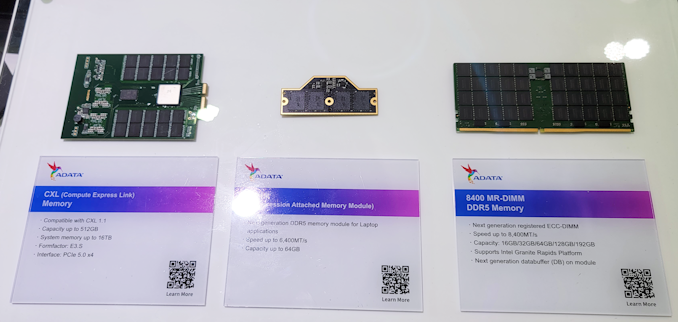
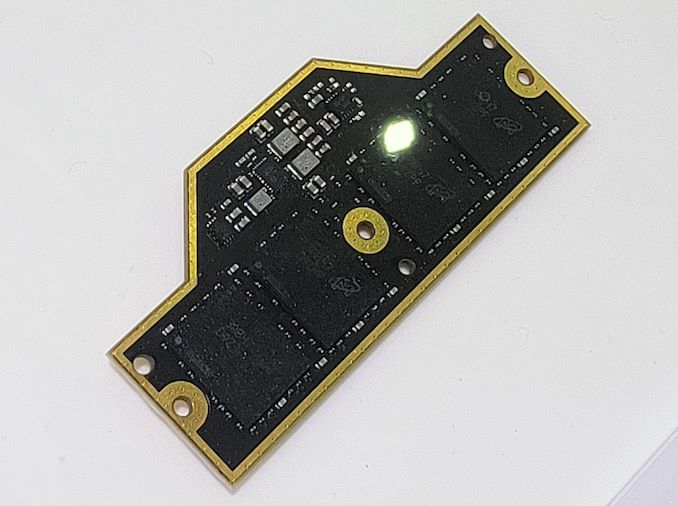
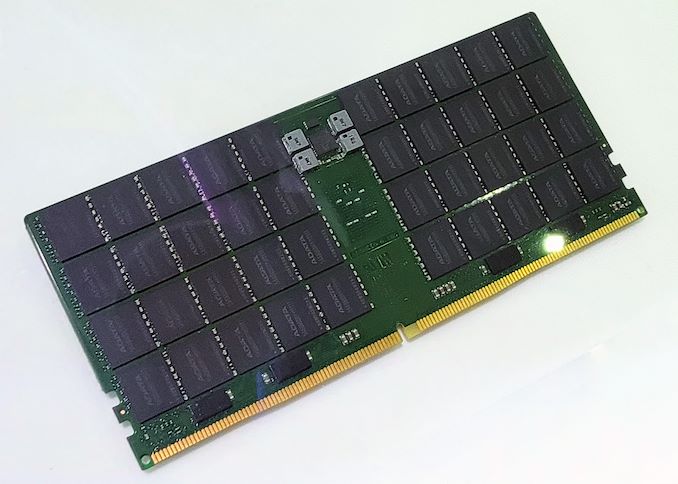


 Quote
Quote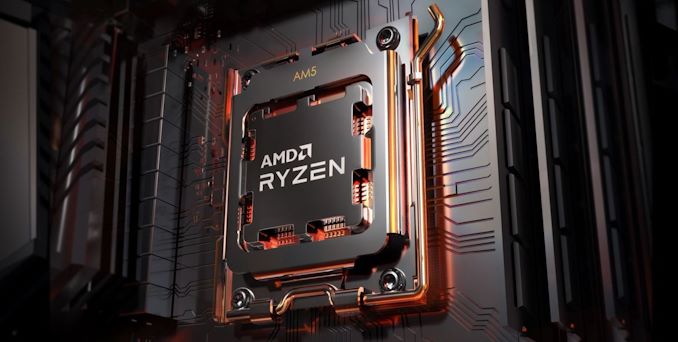
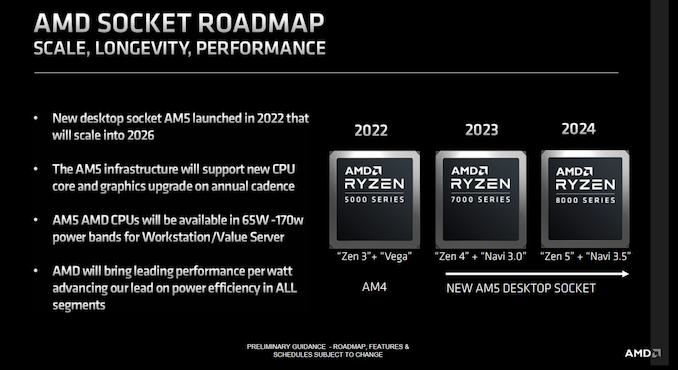
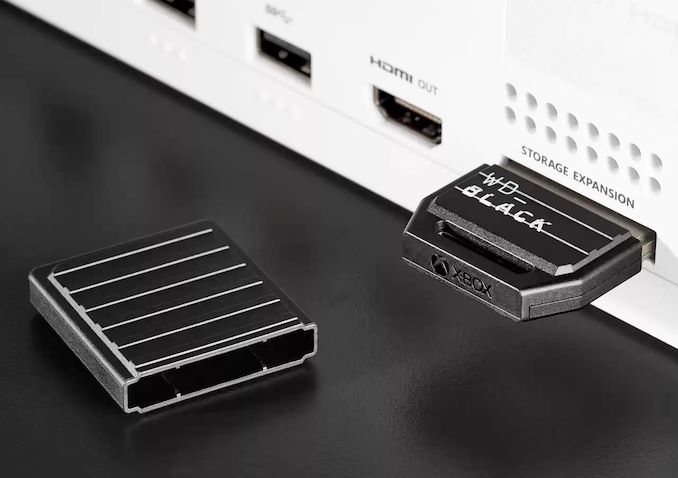
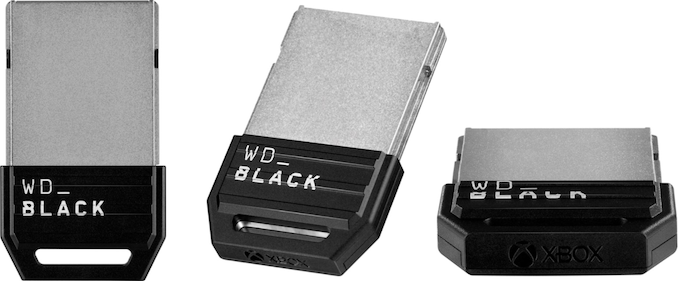

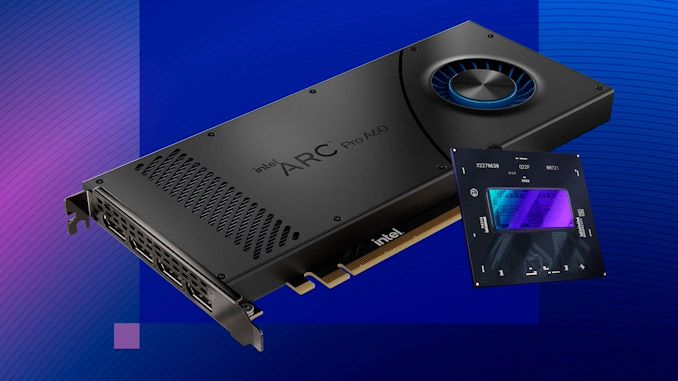

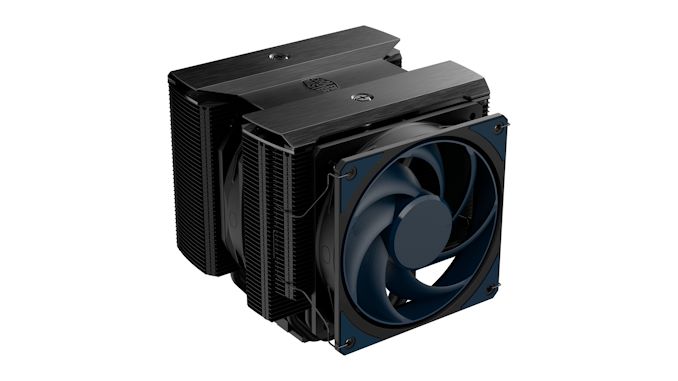
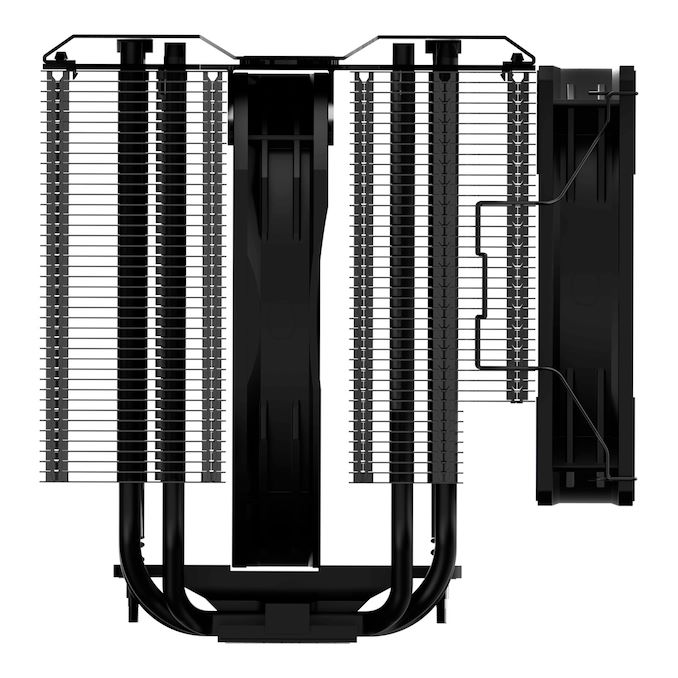
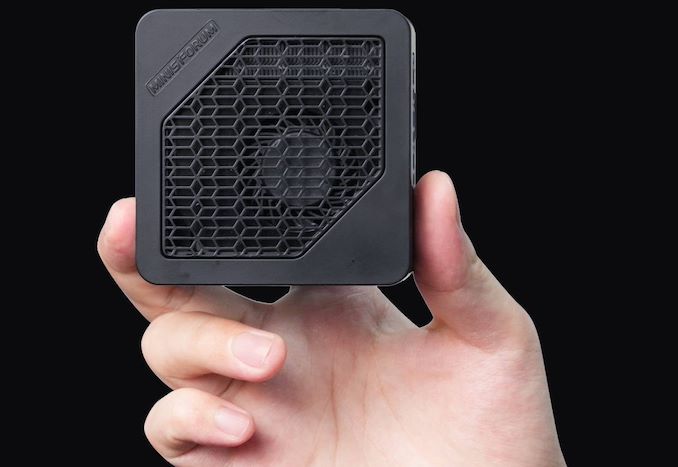
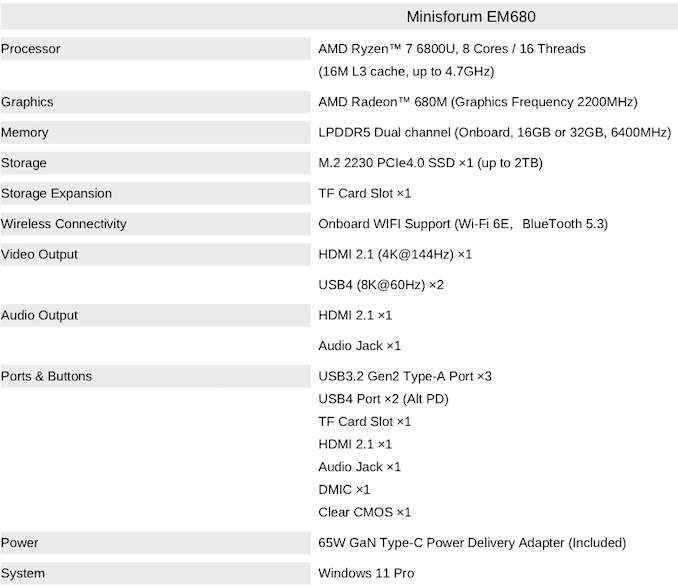
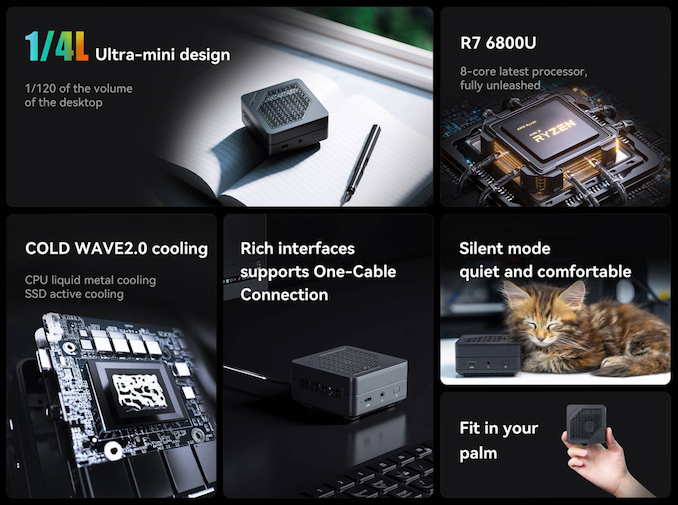
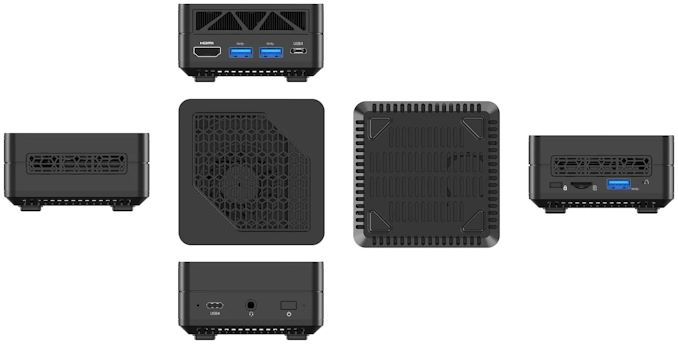
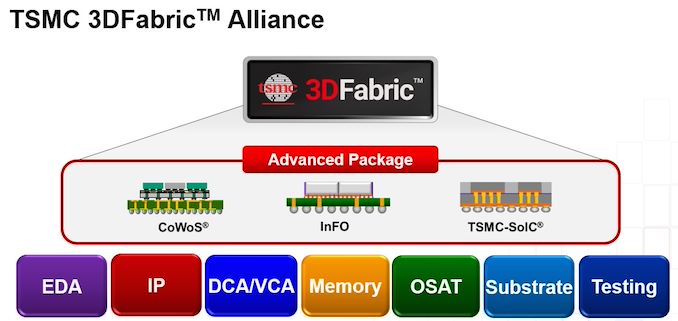
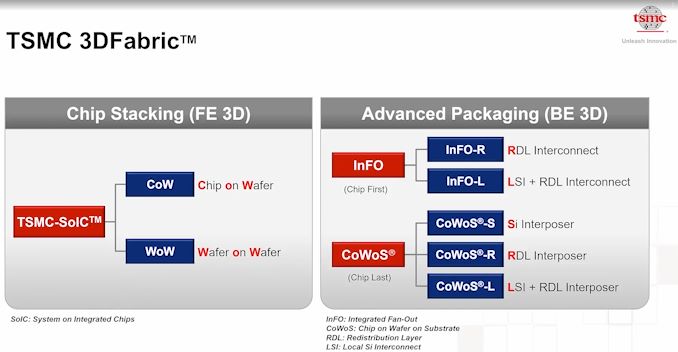
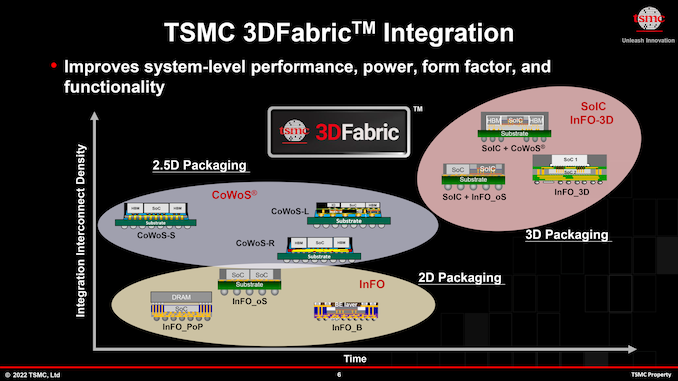
















Bookmarks